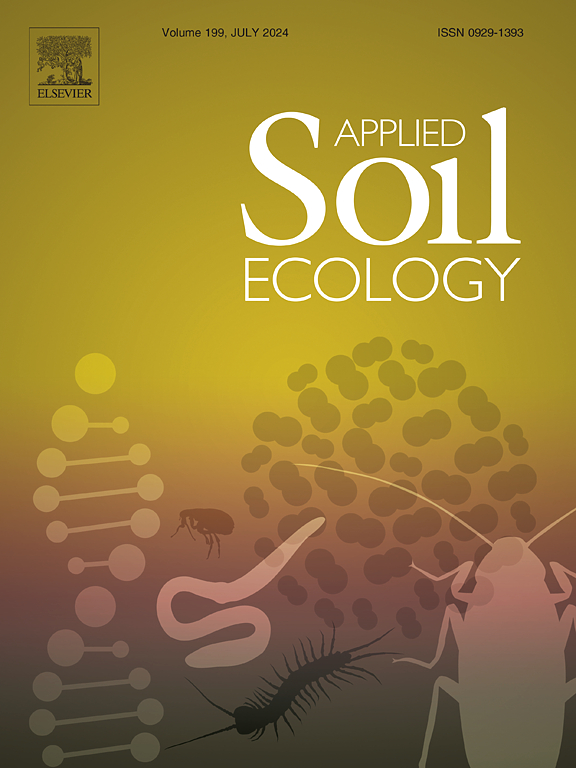干湿循环下水稻土丰富与稀有硝化与反硝化群落的时间动态
IF 4.8
2区 农林科学
Q1 SOIL SCIENCE
引用次数: 0
摘要
干湿循环是水稻土中一种常见的节水方式,对土壤微生物群落产生显著影响,这些微生物群落通过硝化和反硝化作用调节氮循环。然而,硝化和反硝化群落对这些循环的反应,特别是丰富和罕见的亚群落的作用,仍然知之甚少。在这里,我们使用下一代功能基因测序(AOA, AOB, nirK和nirS)来探索在干湿循环中硝化和反硝化菌群落的时间动态。我们的研究结果揭示了不同的响应模式:与AOA、AOB和nirK群落相比,nirs型反硝化菌表现出独特的动态。AOA、AOB和nirS群落中丰富的类群变化比稀少的类群变化更明显,而nirK群落则相反。与AOA相比,AOB的丰度更高,突出了它们在硝化作用中的主导作用。四种氮循环基因之间的强相关性表明,微生物相互作用复杂,对环境波动的响应协调一致。这些发现增强了我们对水稻土微生物驱动的氮循环的理解,并为可持续农业管理策略提供了信息。本文章由计算机程序翻译,如有差异,请以英文原文为准。
Temporal dynamics of abundant and rare nitrifying and denitrifying communities in paddy soils under wetting-drying cycles
Wetting-drying cycles, a common water-saving practice in paddy soils, significantly influence soil microbial communities that regulate nitrogen cycling through nitrification and denitrification. However, the responses of nitrifying and denitrifying communities to these cycles, especially the roles of abundant and rare subcommunities, remain poorly understood. Here, we used next-generation sequencing of functional genes (AOA, AOB, nirK, and nirS) to explore the temporal dynamics of nitrifier and denitrifier communities during wetting-drying cycles. Our results revealed divergent response patterns: nirS-type denitrifiers exhibited unique dynamics compared to AOA, AOB, and nirK communities. Abundant taxa in AOA, AOB, and nirS communities showed more pronounced changes than their rare counterparts, while nirK communities exhibited the opposite pattern. The higher abundance of AOB compared to AOA highlighted their dominant role in nitrification. Strong correlations among the four N-cycling genes indicated complex microbial interactions and coordinated responses to environmental fluctuations. These findings enhance our understanding of microbial-driven N cycling in paddy soils and inform strategies for sustainable agriculture management.
求助全文
通过发布文献求助,成功后即可免费获取论文全文。
去求助
来源期刊

Applied Soil Ecology
农林科学-土壤科学
CiteScore
9.70
自引率
4.20%
发文量
363
审稿时长
5.3 months
期刊介绍:
Applied Soil Ecology addresses the role of soil organisms and their interactions in relation to: sustainability and productivity, nutrient cycling and other soil processes, the maintenance of soil functions, the impact of human activities on soil ecosystems and bio(techno)logical control of soil-inhabiting pests, diseases and weeds.
 求助内容:
求助内容: 应助结果提醒方式:
应助结果提醒方式:


